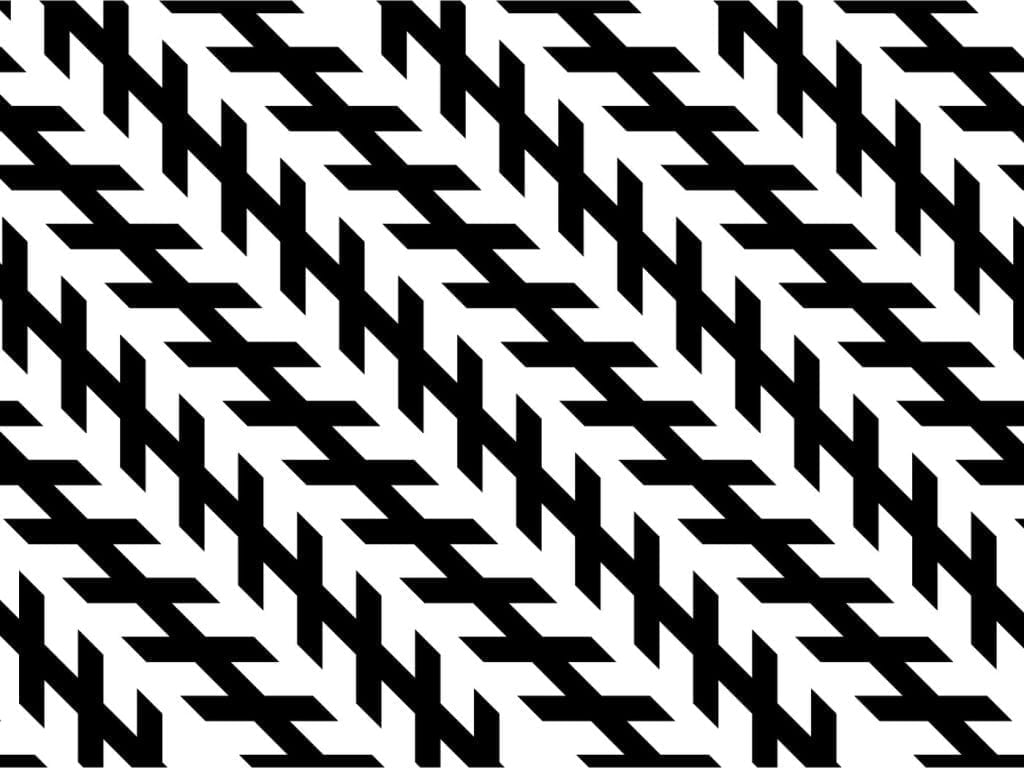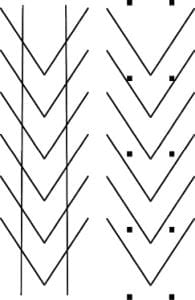Zöllner Illusion
I will be exploring using the Zollner Illusion as my inspiration for the pattern/illusion incorporated into my next paninting. Here is further information about this particular illusion.

The Zöllner Illusion was created by Johann Karl Friedrich Zöllner (1834 – 1882), a German astrophysicist with a keen interest in optical illusions. Zöllner was inspired by a cloth pattern that he observed in his father’s factory, and first published the illusion in the journal Annalen der Physik in 1860.
The Zöllner Illusion is one among a number of illusions where a central aspect of a simple line image – e.g. the length, straightness, or parallelism of lines – appears distorted in virtue of other aspects of the image – e.g. other background/foreground lines, or other intersecting shapes. These are sometimes called ‘geometrical-optical illusions’. You can search for other geometrical illusions in the Illusions Index
There are a number of general hypotheses about human vision which would explain the Zöllner Illusion. One is that our perceptual systems have a tendency to ‘expand’ acute angles—that is to represent them as larger angles than they really are. In other words, the shorter lines which laterally intersect the longer lines cause the visual system to enhance the orientation contrast between the long and shorter lines (hence ‘expanding’ the acute angles), in turn causing one end of the longer lines to seem closer than the other, hence making the lines appear unparallel (Kitaoka & Ishihari 2000; Eagleman 2001).
One piece of evidence which might support that acute-angle expansion hypothesis is that a variant of the Zöllner illusion in which the long lines are replaced with square dots plotted along the same path, which removes the illusory effect as demonstrated below:

The Zöllner Illusion was created by Johann Karl Friedrich Zöllner (1834 – 1882), a German astrophysicist with a keen interest in optical illusions. Zöllner was inspired by a cloth pattern that he observed in his father’s factory, and first published the illusion in the journal Annalen der Physik in 1860.
The Zöllner Illusion is one among a number of illusions where a central aspect of a simple line image – e.g. the length, straightness, or parallelism of lines – appears distorted in virtue of other aspects of the image – e.g. other background/foreground lines, or other intersecting shapes. These are sometimes called ‘geometrical-optical illusions’. You can search for other geometrical illusions in the Illusions Index
There are a number of general hypotheses about human vision which would explain the Zöllner Illusion. One is that our perceptual systems have a tendency to ‘expand’ acute angles—that is to represent them as larger angles than they really are. In other words, the shorter lines which laterally intersect the longer lines cause the visual system to enhance the orientation contrast between the long and shorter lines (hence ‘expanding’ the acute angles), in turn causing one end of the longer lines to seem closer than the other, hence making the lines appear unparallel (Kitaoka & Ishihari 2000; Eagleman 2001).
One piece of evidence which might support that acute-angle expansion hypothesis is that a variant of the Zöllner illusion in which the long lines are replaced with square dots plotted along the same path, which removes the illusory effect as demonstrated below


